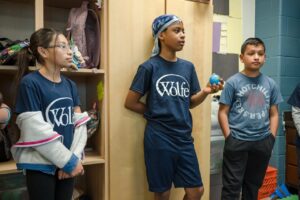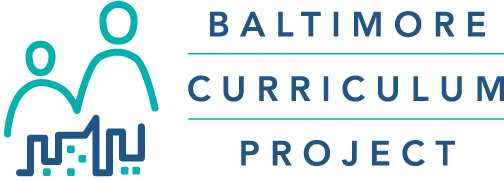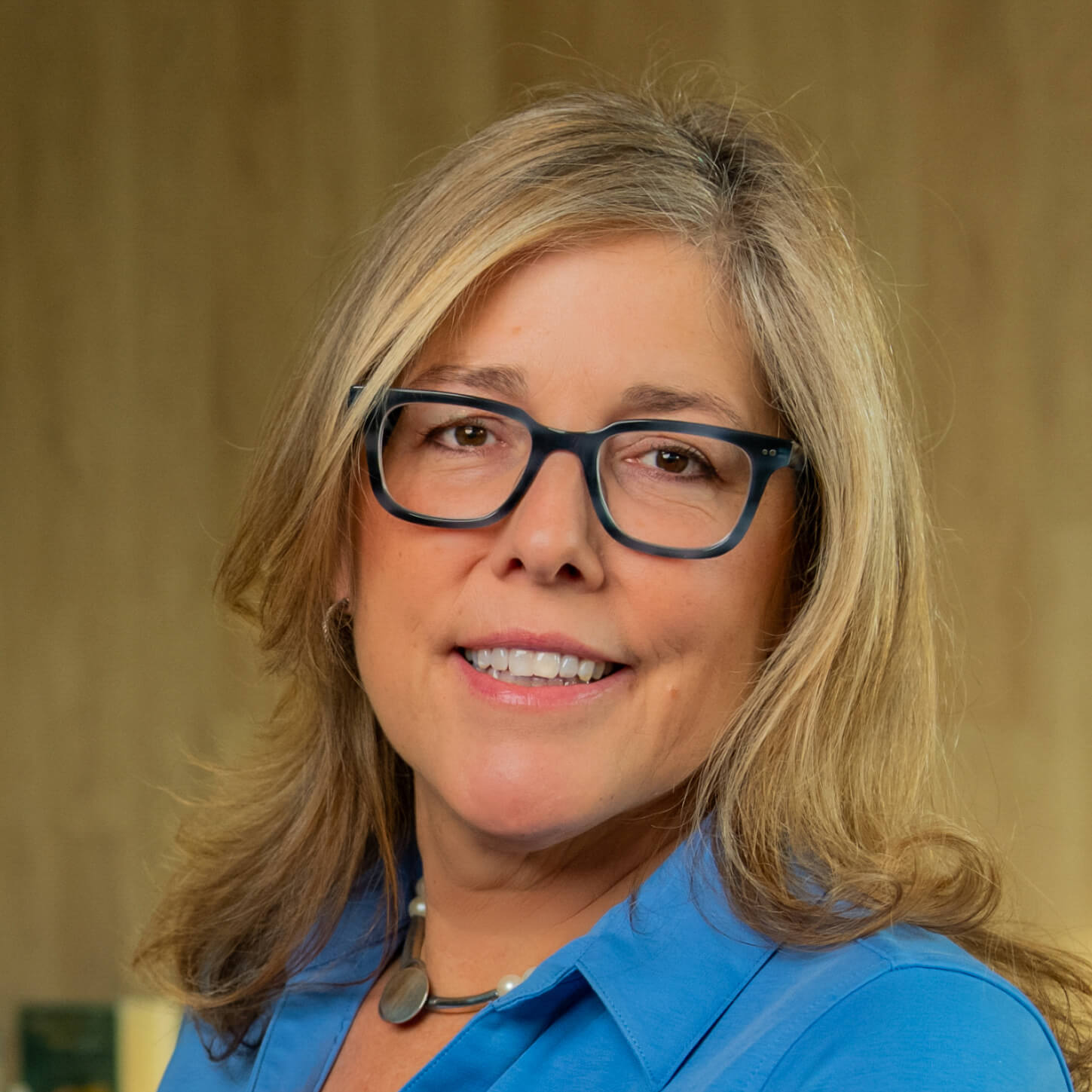This year, as Baltimore Curriculum Project (BCP) celebrates 30 years of serving Baltimore’s children and families, I’m reflecting on the many ways BCP has grown. Some of our most meaningful progress has come not from new programs or policies but from a deep cultural shift in our network of six neighborhood conversion charter schools.
One of the most transformative shifts has been our commitment to Restorative Practices.
A History of Healing and Accountability
 Restorative practices start with the simple but powerful idea that when harm happens, the best way to heal is through conversation, understanding, and accountability. By proactively creating positive relationships, when problems occur, the focus is not punitive but constructive. Using dialogue and mutual respect, Restorative Practices aim to build a culture of belonging and cooperation and strengthen social connections within a school or community.
Restorative practices start with the simple but powerful idea that when harm happens, the best way to heal is through conversation, understanding, and accountability. By proactively creating positive relationships, when problems occur, the focus is not punitive but constructive. Using dialogue and mutual respect, Restorative Practices aim to build a culture of belonging and cooperation and strengthen social connections within a school or community.
The roots of Restorative Practices go back long before they appeared in classrooms. For generations, Indigenous communities around the world have used circle processes and community accountability to resolve harm and rebuild trust. The modern restorative justice movement picked up momentum in the criminal justice system in the 1970s and ’80s, offering an alternative to punitive systems by centering healing, dialogue, and responsibility.
Soon, educators saw the power of this approach for schools. Especially in urban public school districts, where suspensions and zero-tolerance policies too often pushed children out rather than drawing them in, Restorative Practices offered a new path: one that focused on belonging, relationships, and repair.
Pioneering Restorative Practices in Baltimore and Maryland
In 2006, City Springs Elementary / Middle School was the first school in Baltimore City—and in Maryland—to implement Restorative Practices. Like many urban schools, City Springs once struggled with high suspension rates, shaped by a system where consequences loomed larger than connection. Although the school climate improved dramatically when the then elementary school implemented Direct Instruction reading and math programs, there were still too many conflicts occurring when students weren’t actively immersed in instruction.
That began to change when City Springs embraced Restorative Practices, not as a one-time training or a “behavior management tool,” but as a schoolwide culture shift in climate, instruction, and leadership.
Today, you can feel the difference. Students begin their mornings in circles where they greet one another, share stories, and build community. When conflict arises, students and staff take time to listen, reflect, and restore—not punish and move on. We focus on what happened, who was affected, and what needs to be done to make things right.
The results speak volumes:
- Suspensions dropped by more than 80% within three years of implementation
- Chronic absenteeism decreased, as students felt more connected to school
- School Climate Survey scores rose, especially in areas of trust, respect, and safety
- Teachers reported fewer disruptions, stronger classroom communities, and deeper relationships with students
We’ve seen firsthand how Restorative Practices reduce suspensions, build empathy, and give students a sense of voice and ownership. But even more importantly, we’ve seen how they make school feel like a safe, respectful, and caring place to grow.
City Springs became a national model. In “Seen and Heard: How Student Belonging Shapes School Communities” (2025), the Fund for Educational Excellence named City Springs a case study in creating inclusive and supportive learning environments.
Similarly, a 2020 report by the Open Society Institute–Baltimore, Johns Hopkins University, and the University of Maryland Carey School of Law found that restorative practices led to measurable improvements in school climate, student behavior, and staff-student relationships.
“We are creating schools where students don’t just learn—they belong,” says Dr. Rhonda Richetta, longtime principal at City Springs and champion of the school’s groundbreaking Restorative Practices implementation. “Restorative Practices help us build that sense of community, every single day.”
The Impact of Restorative Practices Today in Baltimore, Maryland, and the Nation
Baltimore City Public Schools, BCP’s educational partner, officially adopted Restorative Practices in 2018 as part of its strategy to improve school climate. Training and implementation followed, with schools encouraged to use community-building circles, restorative dialogues, and inclusive re-entry processes after conflict.
Since adopting Restorative Practices, City Schools saw a 44% drop in suspensions between 2017 and 2022 (Maryland State Department of Education). Additionally:
- 72% of school staff reported improved school climate
- 69% of school staff reported improved student respect for one another
- 64% of school staff reported improved student respect for staff
According to a 2021 national report by the RAND Corporation, schools across the U.S. that use Restorative Practices saw a 35% reduction in student suspensions. Teachers reported greater instructional time and improved student engagement. And students experienced improved peer relationships and school connectedness, especially in middle and high schools.
Beyond Discipline: Building Skills for Life
Restorative Practices do more than reduce suspensions and make schools safer—they help students build essential life skills like empathy, communication, and conflict resolution. These are especially critical in high-poverty, high-trauma communities where students often face challenges beyond the classroom.
At City Springs and across our network of six BCP schools, more than 100 trained students, called Peer Mediators, now lead peer circles, facilitate conversations, and actively contribute to the well-being of their community. These practices build student agency and a culture of shared accountability.
Our Peer Mediators are leaders, role models, and agents of change. This program began at City Springs as a small pilot, growing into a vibrant, student-led initiative where trained student mediators help resolve conflicts among their peers. They help de-escalate conflicts, prevent future incidents, and reinforce a school culture where every voice matters.
When students mediate conflicts, they practice leadership, build confidence, and model the restorative values that shape our schools. This shift perfectly embodies our core belief at BCP: that young people are not just recipients of support—they are active agents of change.
The ripple effect is clear: peer mediation strengthens the whole school community by fostering respect, reducing repeat conflicts, and creating a culture where every voice matters.
Looking Ahead
As we look toward the next 30 years of BCP, restorative practices remain central to our vision. We believe schools must be more than places of academic instruction. They must be communities of care, accountability, and trust.
City Springs lit the way, and now other BCP schools are walking that path—with heart, with intention, and with the belief that every child deserves a school where they are seen, heard, and valued. We are passionate advocates for the statewide movement, Voices for Restorative Schools, which aims to bring a vibrant culture of Restorative Practices to every Maryland public school.
Learn more in this BCP blog post by David Hornbeck, founder of Voices for Restorative Schools.
Restorative practices have helped us build stronger classrooms, deeper relationships, and more resilient communities. The work continues, and the impact grows.
Here’s to the next chapter—and to every student, teacher, and leader who believes in a school where belonging comes first.
Join us for the free, world premiere of Restorative Practices Make Strong Schools, highlighting the impact of restorative practices at BPC schools City Springs and Hampstead Hill.
The evening includes a panel discussion moderated by WYPR’s Tom Hall on how restorative practices are shaping our school communities.
September 29, 4:00-5:30 PM
Hampstead Hill Academy, 500 S. Linwood Ave., Baltimore
Scan the QR code to RSVP.
Beyond Discipline: Building Skills for Life
Restorative practices do more than reduce suspensions—they help students build essential life skills like empathy, communication, and conflict resolution. These are especially critical in high-poverty, high-trauma communities where students often face challenges beyond the classroom.
At City Springs, students now lead peer circles, facilitate conversations, and actively contribute to the well-being of their community. These practices build student agency and a culture of shared accountability.
Looking Ahead
Sure! Here’s a thoughtful explanation of how restorative practices have naturally evolved into peer mediation, especially in BCP schools like City Springs, written in a way that fits Laura’s voice or a blog narrative:
One of the most exciting developments we’ve seen through our commitment to restorative practices is the growth of peer mediation programs—especially at schools like City Springs.
Restorative practices start with the simple but powerful idea that when harm happens, the best way to heal is through conversation, understanding, and accountability. At City Springs, this starts with community-building circles and restorative conversations facilitated by staff.
But over time, as students grow in confidence and skill, they begin to take a more active role in this process. That’s where peer mediation comes in.
Peer mediation empowers students to be the leaders in resolving conflicts among their classmates—teaching them valuable skills in empathy, communication, and problem-solving. Instead of relying solely on adults, students learn to listen deeply, identify the root causes of conflict, and help their peers reach agreements that restore relationships and build trust.
At City Springs, peer mediation started as a small initiative but quickly blossomed into a core part of the school culture. Trained student mediators now regularly step in to support classmates, reducing disruptions and helping the community feel safer and more connected.
This student-led approach aligns perfectly with our belief at BCP that young people are not just recipients of support—they are active agents of change. When students mediate conflicts, they practice leadership, build confidence, and model the restorative values that shape our schools.
The ripple effect is clear: peer mediation strengthens the whole school community by fostering respect, reducing repeat conflicts, and creating a culture where every voice matters.
As we celebrate 30 years of BCP, I believe restorative practices will be central to our next 30. Our schools are not just places for academic learning—they are communities. And strong communities are built on trust, accountability, and care.
City Springs lit the way, and now other BCP schools are walking that path—with heart, with intention, and with the belief that every child deserves a school where they are seen, heard, and valued.
Here’s to the work ahead—and to the relationships that will carry us forward.

